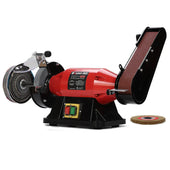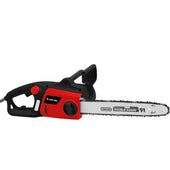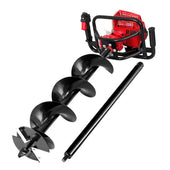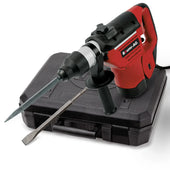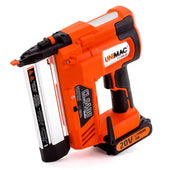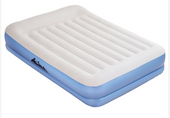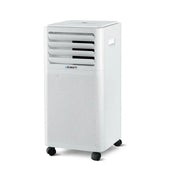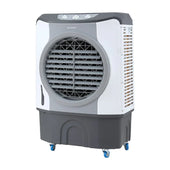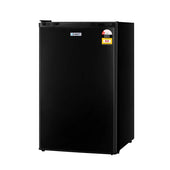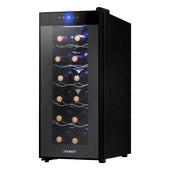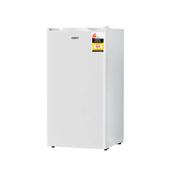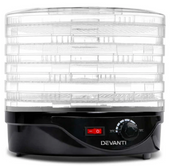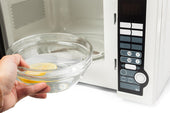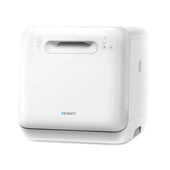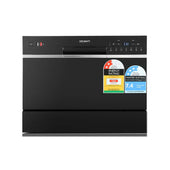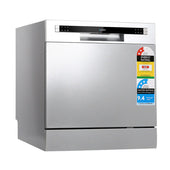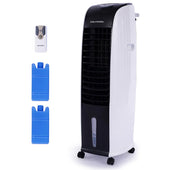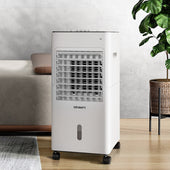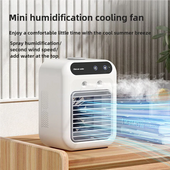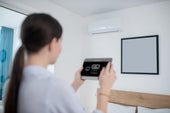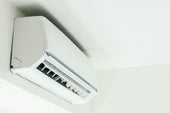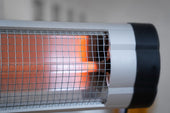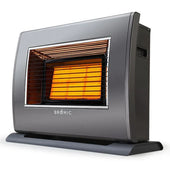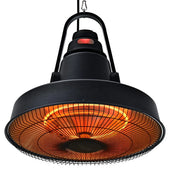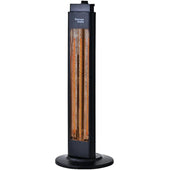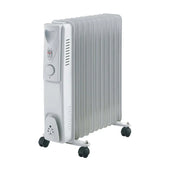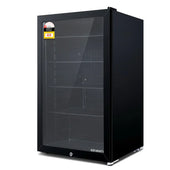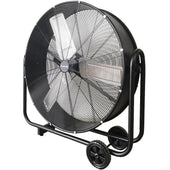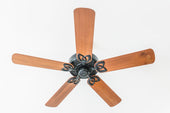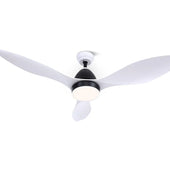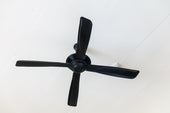Introduction to Aquarium Filtration Systems
Aquarium filtration systems are critical components that ensure a healthy and balanced aquatic environment for fish, plants, and other organisms. These systems are designed to maintain water clarity, regulate chemical composition, and remove debris and waste that could contribute to harmful conditions. Without effective filtration, toxic substances such as ammonia and nitrates can accumulate, threatening the wellbeing of aquatic life.
There are three main types of filtration processes used in aquariums: mechanical, biological, and chemical. Mechanical filtration involves the physical removal of solid particles such as uneaten food, plant matter, and fish waste through sponges, pads, or other filtering media. This prevents the buildup of debris, which could otherwise lead to water quality issues. Biological filtration, on the other hand, utilises beneficial bacteria to break down harmful substances like ammonia into less toxic compounds such as nitrites and nitrates. These bacteria thrive in specific filter media, making biological filtration indispensable for long-term water stability. Lastly, chemical filtration targets dissolved impurities and toxins. Activated carbon, purifiers, and specialised resins are among the materials used to neutralise contaminants, maintain water clarity, and manage odours.
When selecting a filtration system, several factors must be considered, such as the tank size, the type of fish and plants, and the bioload—essentially the organic waste produced in the tank. Common categories of filters include hang-on-back (HOB) filters, canister filters, sponge filters, and internal or submersible filters. Each type comes with unique advantages tailored to specific aquarium setups.
A well-functioning filtration system not only supports optimal water parameters but also replicates a natural environment, thereby reducing stress for fish. Proper maintenance, including cleaning and replacing filter media as needed, is equally essential for long-term effectiveness.
Why Choosing the Right Filter Matters for Your Aquarium
Selecting the correct filter for an aquarium is essential to maintaining a healthy environment for aquatic life. Filters serve as the core system for cleaning and ensuring water quality, which directly impacts the health, behaviour, and lifespan of fish and other tank inhabitants. For success in fish-keeping, choosing an appropriate filter cannot be overlooked.
An aquarium filter performs three crucial types of filtration:
- Mechanical Filtration: This removes debris such as uneaten food, fish waste, and plant matter by trapping particles in a sponge or other material. Without it, debris would accumulate, leading to poor water clarity and increased stress for fish.
- Biological Filtration: This supports beneficial bacteria colonies that break down harmful substances like ammonia and nitrites into less toxic nitrates. Biological filtration is critical, as these microorganisms are the foundation of a well-balanced ecosystem.
- Chemical Filtration: This process uses materials like activated carbon or resin to remove impurities, toxins, and odours. While not always required, chemical filtration helps address specific issues such as tannins or medication residues.
Different tanks have unique requirements based on size, fish species, water conditions, and whether the tank is freshwater or marine. Neglecting these factors can lead to water imbalances, increased algae growth, or even the death of tank inhabitants. Additionally, an inadequate filter could work inefficiently, resulting in higher maintenance demands for the owner.
By understanding these requirements, aquarists can choose between filter types, such as canister filters, hang-on-back systems, sponge filters, or internal filters. Effort must also be made to match the filter’s flow rate with the aquarium’s size to ensure effectiveness. For example, tanks with delicate fish or shrimp require a gentler flow compared to those housing robust species like cichlids.
Proper filtration is the foundation of a thriving aquarium.
Types of Aquarium Filters Explained
Aquarium filters are vital in maintaining water quality and ensuring a healthy environment for aquatic life. Each filter type has unique functionality, catering to specific needs.
1. Mechanical Filters
Mechanical filters physically remove debris, waste, and particulate matter from the water. They utilise sponges, filter pads, or floss materials to trap visible contaminants. These filters are beneficial for producing clear water and reducing the load on other filtration systems. Regular cleaning is required to avoid clogging and maintain effectiveness.
2. Biological Filters
Biological filters support beneficial bacteria that break down harmful ammonia and nitrites into less toxic nitrates. These systems often use bio-media, like ceramic rings or bio-balls, to maximise surface area for bacterial growth. Such filters are essential for maintaining the nitrogen cycle, promoting a stable ecosystem within the aquarium.
3. Chemical Filters
Chemical filtration involves using materials like activated carbon to remove dissolved impurities or unwanted substances from the water. This includes toxins, odours, and chemicals like chlorine. Chemical filters are especially useful for addressing specific issues, such as water discolouration, but should be replaced frequently for optimal performance.
4. Canister Filters
Canister filters are external units, known for their versatility and customisation options. They combine mechanical, biological, and chemical filtration methods. Their high capacity makes them suitable for larger aquariums with greater filtration needs. Installation requires more space, but their efficiency outweighs this drawback.
5. Sponge Filters
Sponge filters are air-driven and provide both mechanical and biological filtration. They are commonly used in breeding tanks or aquariums housing delicate species like shrimp, as they offer gentle water flow. Maintenance is simple, involving periodic cleaning of the sponge.
6. Hang-on-Back (HOB) Filters
HOB filters are compact and easy to install, ideal for beginner aquarists. They hang externally on the tank and offer mechanical, biological, and chemical filtration. Their cost-effectiveness makes them popular for small-to-medium-sized aquariums.
By understanding the types and purposes of filters, aquarists can make informed choices for their aquarium needs.
Factors to Consider When Picking an Aquarium Filter & Pump
Choosing the right aquarium filter and pump is vital for maintaining a balanced and healthy aquatic environment. Several factors must be evaluated to ensure that the equipment fits the specific requirements of an aquarium and its inhabitants.
1. Aquarium Size and Capacity
- The tank size plays a key role in selecting a filter and pump. Devices are typically rated based on the number of gallons or litres they can handle.
- A filter or pump that is underpowered for a larger tank may not adequately process water, leading to poor water quality. Conversely, a unit that is too powerful can create excessive currents, especially for smaller aquariums or delicate species.
2. Type of Aquarium
- Freshwater and saltwater aquariums have different requirements. Equipment designed for saltwater tanks often needs to address the higher salinity and additional waste from marine organisms.
- Planted tanks typically require filters that do not overly disturb water surfaces to retain carbon dioxide levels essential for plant growth.
3. Filtration Types
- Mechanical filtration: Traps debris such as uneaten food or fish waste.
- Biological filtration: Promotes the growth of beneficial bacteria that convert harmful ammonia into less toxic substances.
- Chemical filtration: Removes impurities like odours, medications, and toxins with activated carbon or specialised media.
4. Flow Rate
- The flow rate, measured in gallons per hour (GPH) or litres per hour, should turnover the aquarium’s water approximately 4-8 times per hour, depending on the stock and environmental needs.
5. Noise Levels
- Noise tolerance is another consideration. Some filters and pumps can generate significant noise, which may be disruptive in living spaces or offices.
6. Ease of Maintenance
- A maintenance-friendly design ensures routine cleaning and replacements are manageable without dismantling the entire system.
7. Energy Efficiency
- Energy-efficient models reduce operational costs by consuming less electricity without sacrificing performance.
8. Compatibility with Tank Inhabitants
- Certain species require specific flow conditions. For example, bettas and other small fish typically prefer a gentle flow, while fast-swimming fish thrive with stronger currents.
These considerations ensure that the chosen filter and pump meet both the technical demands of the tank and the comfort needs of its inhabitants.
Overview of the 5 Best Filters & Pumps for Crystal-Clear Water
Maintaining clean and healthy water in an aquarium is essential for the well-being of aquatic life. The right filter and pump combination ensures proper water circulation, removes impurities, and supports biological filtration. Below are five highly recommended options designed to provide crystal-clear aquarium water and a thriving environment for fish and plants.
1. Fluval FX6 High-Performance Canister Filter
This powerful canister filter is ideal for large tanks up to 1500 litres. Equipped with multistage filtration, it efficiently removes debris, chemical impurities, and harmful toxins. Its smart pump technology offers self-priming and energy efficiency, while the quiet operation makes it a favourite among advanced hobbyists.
2. AquaClear HOB Filter
The AquaClear HOB (Hang-On-Back) filter is perfect for medium-sized tanks. Its customisable filter media baskets allow for mechanical, chemical, and biological filtration. The re-filtration system enhances water contact time, ensuring optimal purification while conserving energy.
3. Eheim Classic External Filter
Eheim’s classic series delivers reliable performance for small to medium aquariums. Its simple design incorporates long-lasting filter media and consistent water flow. The integrated shut-off valves make it user-friendly, and its quiet operation appeals to both beginners and experts.
4. Hydor Koralia Circulation Pump
This circulation pump ensures effective water movement throughout the aquarium, preventing stagnant areas. Its magnetic suction cup mount offers flexibility, while its compact size ensures minimal visual obstruction. Suitable for both freshwater and marine tanks, it enhances oxygen distribution.
5. Tetra Whisper IQ Power Filter
The Whisper IQ is designed for quiet, effective filtration in smaller aquariums. Its sound shield technology minimises noise, while the bio-scrubber eliminates ammonia and nitrites efficiently. Its adjustable flow rate provides custom water movement tailored to specific fish needs.
Selecting the right filter and pump combination depends on tank size, aquatic inhabitants, and individual needs. Each of these options excels in specific applications, ensuring clean, well-oxygenated water while promoting a healthy aquarium ecosystem.
1. Internal Aquarium Filters: Top Recommendations
Internal aquarium filters are a popular choice for small to medium-sized aquariums due to their compact design and ease of installation. Mounted inside the tank, these filters provide a seamless and efficient solution for maintaining water clarity and quality. Below are some top-rated internal aquarium filters recommended for hobbyists and professional aquarists alike.
1. Fluval U Series Internal Filters
Fluval's U Series is highly regarded for its versatile 3-stage filtration system encompassing biological, mechanical, and chemical filtration. This range supports adjustable flow rates and features modes such as spray-bar circulation and bottom-output circulation, making it customisable for various aquatic environments. These filters are easy to clean, offering quick-release cartridges that simplify maintenance.
2. Tetra IN Plus Internal Filters
Known for their robust build and reliable performance, the Tetra IN Plus series is specially designed for both freshwater and saltwater aquariums. With dual filter chambers, users can alternate media replacement, ensuring ongoing filtration with minimal disruption to beneficial bacteria. Their energy-efficient operation makes them a preferred option for longer use.
3. AquaClear Internal Power Filters
The AquaClear line prioritises quiet operation without compromising performance. An excellent choice for aquariums up to 50 litres, these filters are compact yet capable of managing high levels of debris with sponge, activated carbon, and BioMax options. They’re particularly well-suited for aquarists who value a balanced ecosystem.
4. Eheim Biopower Internal Filters
Eheim’s Biopower filters stand out with their modular design and rotating impeller. They offer superior biological filtration and are compatible with tanks with live plants. This option includes a range of filter media, ensuring flexibility for diverse aquatic needs.
From adjustable flow rates to multi-stage filtration systems, these internal filters cater to aquariums with unique requirements while promoting clean and healthy water conditions.
2. Canister Filters: The Premium Choice for Large Tanks
Canister filters are widely regarded as a high-performance option for maintaining water quality in large aquariums. Designed for efficiency, they offer superior filtration capacity and versatility, making them an excellent choice for hobbyists who prioritise pristine water conditions. These filters operate externally, allowing them to handle larger volumes of water while reducing clutter within the tank.
One of the most notable advantages of canister filters lies in their multi-stage filtration systems. The design incorporates separate media trays or baskets that allow mechanical, chemical, and biological filtration to occur simultaneously. This ability to customise media ensures that these filters can cater to specific aquarium needs, whether for freshwater or marine environments. Additionally, their sealed construction minimises the likelihood of leaks or spills.
Despite their larger size, canister filters often operate silently, thanks to advanced engineering and quality components. This feature makes them highly suitable for home and office settings where noise reduction is valued. Furthermore, these filters offer excellent flow rates that can be easily adjusted to meet the particular requirements of the tank’s inhabitants, ensuring a stable and comfortable environment.
Maintenance frequencies for canister filters are generally lower compared to other filtration systems due to their robust design and efficiency. While cleaning may take more time than simpler internal filters, their durability and strong filtration capacity often outweigh this drawback for experienced aquarium owners.
Key considerations when choosing a canister filter include compatibility with the aquarium’s size, ease of installation, and availability of replacement media. Popular brands in this category, such as Fluval, Eheim, and API, provide reliable options that consistently deliver exceptional performance.
3. Hang-On-Back (HOB) Filters: Convenient and Reliable Options
Hang-On-Back (HOB) filters, often referred to as external power filters, are highly favoured for their simplicity, efficiency, and versatility in aquarium filtration systems. These filters are designed to attach directly to the rim of the aquarium, minimising the use of interior space while ensuring effective filtration. Ideal for both beginner and experienced aquarists, they offer convenience that complements their reliable functionality.
Features and Benefits
HOB filters operate through a combination of mechanical, chemical, and biological filtration processes. Typically, the mechanical stage removes debris by trapping waste particles in a filter pad or sponge. The chemical media—such as activated carbon—helps in combating toxins, odours, and discolouration. Biological filtration, supported by ceramic rings or specialised biowheels, fosters beneficial bacteria vital for reducing harmful ammonia and nitrites, providing a balanced ecosystem for aquatic life.
Compared to canister filters, HOB models are more compact, making them suitable for small- to medium-sized aquariums. Their plug-and-play design allows for quick installation, and the accessibility of filter cartridges facilitates straightforward maintenance. For aquarists managing tight schedules, the ease of cleaning and replacing filter media is particularly advantageous.
Considerations for Choosing a HOB Filter
When selecting a HOB filter, aquarists should evaluate the tank size and fish stock to ensure adequate flow rate and filtration capacity. Modern units often come with adjustable flow rates, offering flexibility for tanks with delicate species or planted aquariums needing gentler water circulation. Noise levels are another determinant; premium models often feature near-silent operation with improvements in motor engineering.
Furthermore, aquarists aiming to maintain crystal-clear water can benefit from multi-stage filtration systems featured in higher-quality HOB filters. While most models are cost-effective, investing in units with durable construction and customisable filtration modules ensures long-term performance.
This balance of efficiency, ease of use, and effectiveness makes Hang-On-Back filters a dependable choice for maintaining healthy aquarium environments, whether for beginner setups or intricate aquascapes.
4. Sponge Filters: Best for Small or Breeding Tanks
Sponge filters are a simple yet efficient filtration solution, particularly suited for small and breeding tanks. These filters operate by drawing water through a porous sponge, trapping debris and particles while promoting the growth of beneficial bacteria. This dual functionality makes them ideal for maintaining water quality in more sensitive aquarium setups.
One of the notable benefits of sponge filters is their gentle water flow. This feature is especially advantageous for aquariums housing delicate species such as fry, shrimp, or fish with long, flowing fins, as it prevents the stress or harm that can occur with stronger currents. Sponge filters also excel in oxygenating the water, ensuring a well-aerated environment for tank inhabitants.
When integrated with air pumps, sponge filters create a steady, bubbling effect, which not only enhances oxygen exchange but also adds a visual element to the aquarium. Their design is highly customisable, allowing hobbyists to connect them with varying air pump sizes based on the tank’s requirements.
Maintenance of sponge filters is both straightforward and cost-effective. Cleaning simply involves rinsing the sponge in dechlorinated water to remove accumulated debris. Additionally, they lack mechanical parts, minimising the likelihood of operational failures and reducing long-term costs.
Sponge filters are versatile and compatible with multiple tank setups, including hospital tanks, quarantine systems, fry-rearing tanks, and planted aquariums. Their structure supports biofiltration, allowing for a stable nitrogen cycle that is critical for the health of aquatic life.
Their ability to balance efficiency, affordability, and ease of use makes sponge filters a preferred choice for aquarists managing smaller or specialised tanks.
5. Submersible Water Pumps: Powerful Tools for Water Circulation
Submersible water pumps serve as indispensable components for aquariums, offering robust water circulation to maintain aquatic environments. Designed to function underwater, these pumps are compact yet powerful, making them an ideal choice for both freshwater and saltwater tanks. Their primary role lies in facilitating oxygen distribution, ensuring waste removal, and enhancing filtration efficiency, all of which contribute to a healthier habitat for fish and aquatic plants.
Benefits of Submersible Water Pumps
- Efficient Circulation: Submersible pumps circulate water effectively, preventing stagnation that can lead to harmful toxin build-up. This helps maintain stable, clean water conditions that are crucial for aquatic life.
- Space-Saving Design: These pumps are designed to be fully submerged, saving valuable space on the exterior of the aquarium. Their unobtrusiveness ensures no distractions to the tank’s aesthetic appeal.
- Noise Reduction: Operating quietly underwater, they minimise disturbances, making them ideal for aquariums set up in tranquil spaces such as offices or homes.
Key Features to Consider
When selecting a submersible pump, aquarists should evaluate several important features:
- Flow Rate: Choosing a pump with the appropriate flow rate for the tank size is essential to ensure optimal water circulation without overstressing fish.
- Energy Efficiency: Energy-efficient models reduce operational costs while ensuring consistent performance.
- Durability: High-quality materials, such as corrosion-resistant components, prolong the life of the pump, particularly in saltwater environments.
- Ease of Maintenance: Pumps with removable parts facilitate cleaning and upkeep, ensuring long-term functionality.
Submersible pumps can also be paired with additional filtration systems to enhance the water quality further. Proper placement and regular inspection of these pumps are critical to avoid blockage or reduced water movement, which might compromise the aquarium’s ecosystem.
Maintenance Tips for Keeping Filters and Pumps in Top Condition
Proper upkeep of aquarium filters and pumps is essential for ensuring their longevity and the health of aquatic life. Maintaining these components not only preserves water quality but also reduces the risk of equipment failure.
Cleaning the Filters
Filters should be cleaned regularly to prevent debris build-up, which can hinder their functioning. The frequency of cleaning depends on the type of filter and the bioload of the aquarium. For example:
- Mechanical filters require more frequent cleaning to remove waste particles.
- Biological filters, however, should not be over-cleaned as they house beneficial bacteria critical for the nitrogen cycle. Use tank water instead of tap water for rinsing to preserve these essential microbes.
Inspecting Components
Regular inspection of moving parts, such as impellers and seals, helps identify wear and tear. Damaged or worn-out components should be replaced promptly to maintain efficiency. Check hoses and connections for leaks or blockages, as these can disrupt water flow.
Keeping Pumps in Good Shape
Pumps play a crucial role in water circulation. To keep them in peak condition:
- Make sure the pump intake is free from obstructions like algae and debris.
- Lubricate any moving parts as recommended by the manufacturer to avoid friction-related issues.
Monitoring Water Flow
A noticeable decline in water flow indicates potential clogging or malfunction. Adjust settings if necessary and ensure filters and pumps are functioning within the recommended range for the aquarium size.
Routine Maintenance Schedule
Establishing a consistent routine simplifies the upkeep process. Daily checks for proper functioning, weekly cleaning of visible components, and monthly in-depth maintenance can prevent long-term issues.
By adhering to these maintenance practices, filters and pumps provide optimal performance, ensuring a healthy aquatic environment. Continuous diligence reduces stress on the system and contributes to the overall well-being of the fish and other aquarium inhabitants.
How To Ensure Your Filter Matches Your Tank Size and Fish Needs
Selecting the right aquarium filter is essential to maintaining a balanced and healthy aquatic environment. To ensure compatibility, one must assess the tank size and species of fish inhabiting the aquarium. The filtration system should be capable of effectively cleaning the water while providing optimal circulation.
Tank Size Considerations
A filter’s capacity should correspond to the aquarium’s volume. Filters are usually rated based on the number of gallons or litres they can handle, so owners need to match this specification carefully. As a general guideline, a filter should be able to process the entire tank’s water volume at least 4 times per hour. For example:
If the aquarium holds 100 litres, the filter must have a minimum flow rate of 400 litres per hour.
Fish Requirements
Different species have varying filtration needs. Fish such as goldfish, which produce significant waste, demand high-efficiency systems with mechanical, biological, and, at times, chemical filtration. Meanwhile, low-maintenance species like bettas may thrive with simpler filters designed to provide gentle water flow. Owners should research the waste production levels and natural ecosystem preferences of their fish to choose an appropriate filter design.
Types of Filters
A variety of filter types are available, each catering to specific tank conditions:
- Hang-on-back (HOB) filters are versatile, suitable for small-to-medium tanks.
- Canister filters offer robust performance and are ideal for larger aquariums.
- Internal filters are compact and fit smaller tanks efficiently.
- Sponge filters cater to tanks harbouring delicate fish or fry.
Additional Features
Features such as adjustable flow rates, ease of maintenance, and quiet operation should be taken into account. Owners with larger tanks or demanding species may benefit from filters that incorporate multi-stage filtration processes.
Regularly monitoring flow rates and water parameters ensures the filter continues to meet evolving tank and fish needs over time. Transitioning to a higher-capacity model may become necessary as fish mature or waste levels increase.
Frequently Asked Questions About Aquarium Filters and Pumps
1. What is the importance of a filter in an aquarium?
Filters are essential for maintaining water quality in an aquarium. They help remove physical debris, break down harmful toxins like ammonia and nitrites, and ensure proper circulation for oxygen exchange. Without a functional filter, waste can quickly accumulate, leading to an unhealthy and potentially lethal environment for fish.
2. How often should aquarium filters be cleaned?
The frequency of cleaning depends on the type of filter and the aquarium's stocking levels. Generally:
- Mechanical filters (like sponges) should be rinsed every 2–4 weeks.
- Biological filters should not be heavily cleaned, as this could disturb beneficial bacteria. A gentle rinse in tank water every few months suffices.
- Chemical media, such as activated carbon, often requires replacement every 3–4 weeks.
3. Do all aquariums need a pump?
Not all aquariums require a separate pump. Tanks with combined filter-pump units inbuilt may already provide sufficient water aeration and circulation. However, for tanks with a high fish density, live plants, or specific species that require robust water movement, an additional pump is recommended to enhance water flow and evenly distribute oxygen.
4. Can filters and pumps be too powerful?
Yes, overly powerful equipment can cause excessive water currents that stress fish, particularly slow-swimming species like bettas or certain goldfish. When selecting a filter or pump, it is crucial to match the equipment's output to the aquarium's size and the requirements of its inhabitants.
5. What are common signs of a malfunctioning filter or pump?
Common signs include reduced water flow, loud noises, or an unusual accumulation of debris in the tank. Prolonged issues can result in decreased water clarity, elevated toxin levels, and fish health problems. Regular monitoring and maintenance can prevent such issues.
Conclusion: Making the Final Choice for Crystal-Clear Water
Selecting the right aquarium filter and pump is a critical step towards maintaining a healthy and visually appealing aquatic environment. With a multitude of options available, assessing the specific needs of the tank—such as size, type of fish, and water conditions—ensures a tailored solution that supports optimal water quality. Mechanical, chemical, and biological filtration all play significant roles in keeping water clean, removing impurities, and preventing harmful toxin build-up. Each filter type delivers distinct benefits, and understanding their functions aids in making a deliberate and purposeful choice.
For beginners, user-friendly options like power filters or internal filters may present the easiest path toward effective filtration. They are compact, straightforward to install and maintain, while providing reliable performance for smaller setups. In contrast, for complex or larger tanks, canister filters and wet/dry filters deliver robust solutions suited to aquariums hosting advanced ecosystems or requiring intensive filtration processes. Such filters accommodate versatile setups, ensuring water clarity alongside biological balance.
Pumps, often paired with filters, manage water flow and aeration, both essential to sustaining oxygen levels and removing stagnant zones in the tank. Variable-speed pumps allow precise control over flow rates, accommodating fish types sensitive to pressure changes or larger tanks needing consistent circulation. Energy-efficient models provide cost-effective, long-term operation, aligning with budget-conscious aquarists focused on environmental considerations. For reef aquariums, specialised pumps may include wavemakers to simulate natural currents.
Durability, reliability, and maintenance should remain top priorities, as aquarium systems function best with consistent care. Prioritising reputable brands with proven track records in aquatic equipment minimises risks while maximising long-term performance. Buyer reviews and expert recommendations are invaluable when deciding on particular models tailored to unique needs.
Ultimately, pairing the appropriate filter and pump with the tank setup fosters a sustainable environment where fish thrive and water remains clear.



